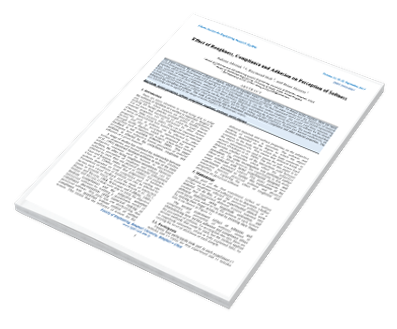Effect of Roughness, Compliance and Adhesion on Perception of Softness
DOI:
https://doi.org/10.37376/lyjer.v1i2.462الكلمات المفتاحية:
human perception, softness, compliance, roughness, stickiness, tactile displaysالملخص
This paper concerns the perceived softness of objects, which is an important aspect of haptic perception. To design tactile displays, there are many unanswered questions about human touch perception and its relationship with material properties. This paper explores how the interaction of material properties affects perception of softness through the use of two psychophysical experiments. The first experiment used a set of nine stimuli representing three materials of different compliance, embossed with three different patterns to vary their surface roughness. The second used three materials of different compliance with three different coatings to vary their stickiness. Magnitude estimation was used to assess the perceived softness for the stimuli in both experiments under two conditions: pressing into the stimulus with the finger, and sliding the finger across the stimulus. The results indicated that compliance affected perception of softness when pressing the finger, but not when sliding; and that compliance, friction and thermal conductivity all influenced the perception of softness. This work is an essential step to understand interactions between compliance and other material properties. The new knowledge can be applied to the design of tactile displays for laparoscopic surgery.
التنزيلات

التنزيلات
منشور
كيفية الاقتباس
إصدار
القسم
الرخصة
الحقوق الفكرية (c) 2021 المجلة الليبية للأبحاث الهندسية

هذا العمل مرخص بموجب Creative Commons Attribution-NonCommercial-NoDerivatives 4.0 International License.






